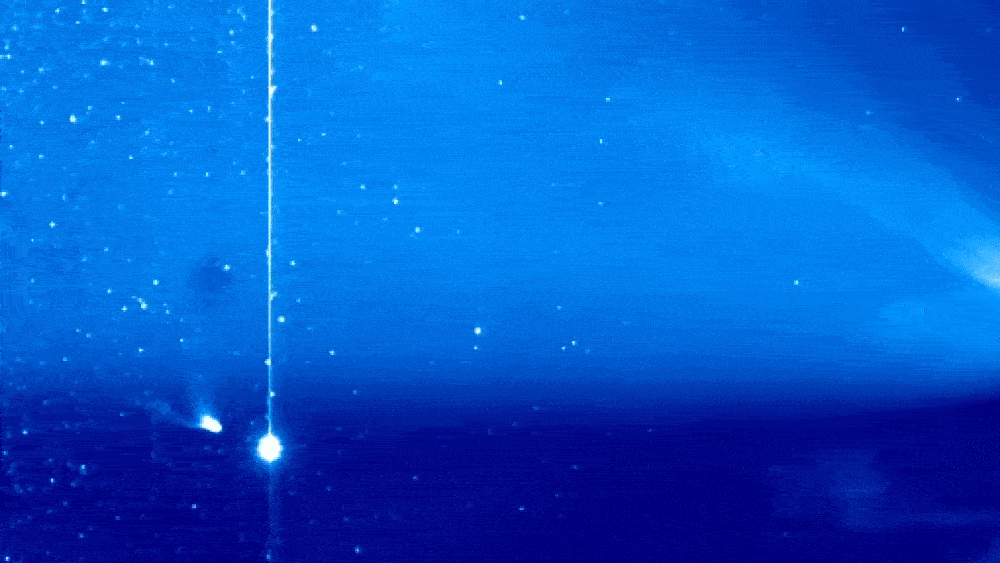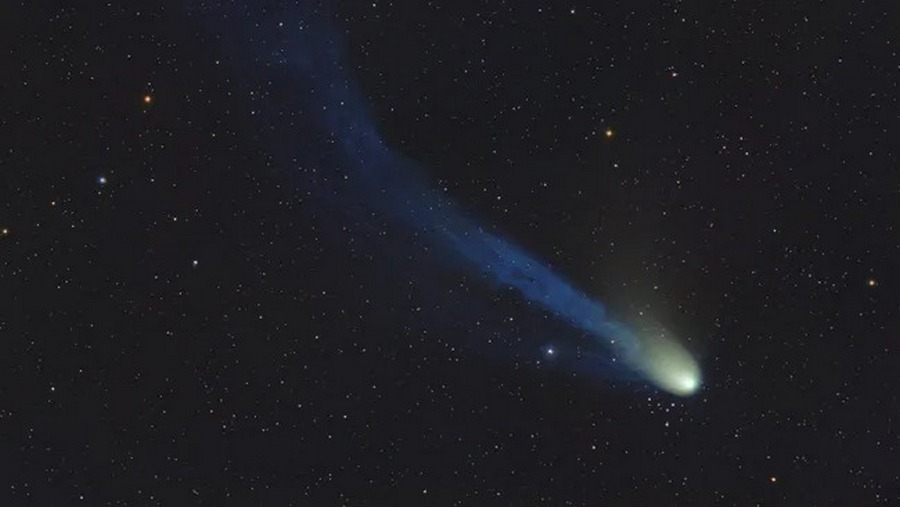Comet 12P/Pons-Brooks (12P), which was also nicknamed the “devil comet”, survived the impact from a huge plasma wave from the Sun. The collision temporarily stripped the comet of its dust tail. NASA’s Solar Terrestrial Relations Observatory A (STEREO-A) spacecraft witnessed this epic collision.

On April 12, a coronal mass ejection occurred on the Sun, which happened suddenly. This incident led to a separation event when the comet’s dust tail temporarily dissolved due to a solar storm and then reappeared. The STEREO-A spacecraft, which is now monitoring the comet as it approaches perihelion, captured this plasma storm in an impressive video. The published footage shows how the coronal mass ejection knocks down the tail of the comet. By the way, the video shows the passage of Jupiter in the background.
It is worth noting that a similar situation occurred with comet Nishimura in September 2023, when a coronal mass ejection tore off its tail during its passage near the Sun — exactly as it happened with 12P.

12P/Pons-Brooks is a green cryovolcanic comet with a nucleus measuring 17 kilometers across. It periodically flares up, throwing a mixture of ice and dust into space with increased solar radiation. When this happens, its coma — the cloud of particles around the core — expands and makes it much brighter. In the past, this bright cloud was deformed so that it visually formed “horns”. This is why the comet got its nickname. However, during recent observations, these characteristic “horns” have already disappeared.
12P/Pons-Brooks orbits the Sun approximately every 71 years on a very elliptical trajectory. The comet spends most of its time on the outer edges of our Solar System, out of sight of telescopes. However, on April 21, it approached perihelion, the closest point in its orbit around the Sun. After that, it will begin to move away from our star and return to the edge of the Solar System.
Earlier, we reported on how Hubble determined the size of the largest comet in history.
According to livescience.com
Follow us on Twitter to get the most interesting space news in time
https://twitter.com/ust_magazine


